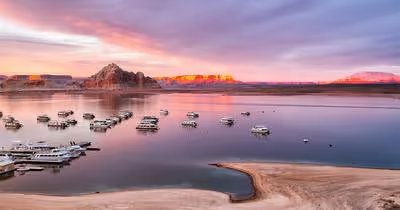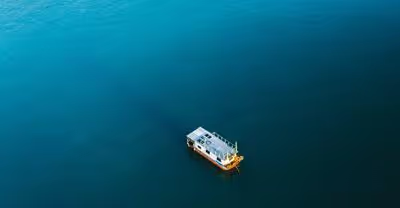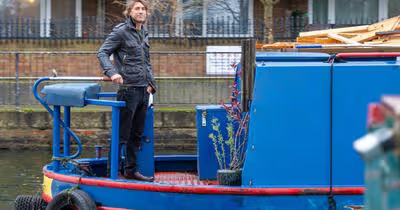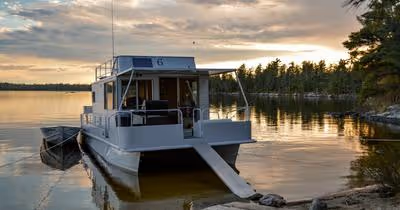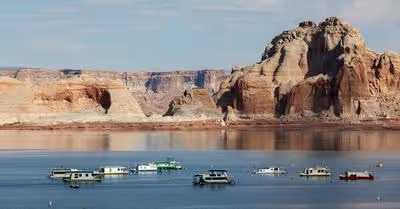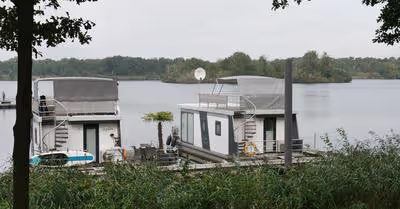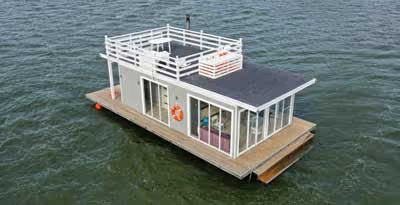
Key Takeaways
- The right boat for shallow waters enhances the ability to navigate shallow areas.
- Shallow water vessels vary in design, allowing for fishing, cruising, and exploration.
- Features to consider when choosing shallow water boats include hull design and draft.
If you want to explore shallow waters, you’ll need a boat tailored for serene, shallow adventures to ensure a perfect, undisturbed journey.
The best boats for shallow water are Bay Boats, Flats Skiffs, Jon Boats, Scooters, Tunnel Boats, and Catamarans. Each excels in navigating shallow depths and regions while offering stability, ease of maneuvering, and access to the most serene waters.
As a seasoned shallow-water boating enthusiast, I've personally navigated these terrains using various boats. From my experience, I can assure you that these boats offer unmatched access and comfort in shallow waters. Trust me, you're in for an unforgettable, serene adventure with any of these choices.
Table of contents
Hide Show- Best Boats for Shallow Water
- 1. Bay Boats
- 2. Flats Skiffs
- 3. Jon Boats
- 4. Scooters
- 5. Catamarans
- 6. Tunnel Boats
- Tips for Boating on Shallow Water
- 1. Know Your Environment
- 2. Choose the Right Boat
- 3. Equipment and Preparation
- 4. Navigation and Steering
- 5. Respect the Ecosystem
- 6. Safety First
- 7. Regular Boat Maintenance
Best Boats for Shallow Water
Exploring the vast and serene waterways with the right boat can offer an unrivaled sense of freedom and adventure. When it comes to cruising through shallow waters, choosing the best boat for the task is essential. Shallow water boating requires vessels specifically designed to navigate areas where depth is a premium, ensuring you can glide over ankle-deep water or negotiate the same depth range without the worry of running aground.
Whether you're eyeing saltwater fishing in flats and backwaters or simply delighting in cruising along a cool new coastline, understanding the features and capabilities of a shallow water boat is key.
Shallow water boats come in various designs, each tailored to maximize performance, stability, and safety in environments where the water's depth can be as little as six inches. With the right shallow water boat, you can discover hidden coves, fish in untouched shallows, and cruise confidently closer to shore.
Here is a comparison table of the key features of the best boats for shallow water:
1. Bay Boats
When you're in the market for the best boat for shallow water, bay boats stand out due to their versatile design, which allows for both inshore and offshore fishing. These boats are specifically engineered to navigate shallow water with ease, providing a stable and smooth ride for keen anglers and boating enthusiasts alike.
Motor Specs
Bay boats typically come with an outboard engine that ranges in horsepower, affording them a combination of high speed and maneuverability. A popular choice might be an engine like the Sterling TR7, which balances fuel efficiency with enough power to swiftly navigate shallow waters.
- Horsepower: Ranges from 90 to 300 HP
- Engine Type: Outboard, often four-stroke, for better efficiency
Carrying Capacity
The carrying capacity of bay boats is designed to accommodate both passengers and gear without compromising performance. Look for models that combine ample space with a build that safely supports the weight.
- Passenger Capacity: Usually 2-6
- Gear Capacity: Sufficient for a full day of fishing equipment and personal items
Draft Depth
One of the most crucial aspects of a bay boat is its draft depth, which dictates how shallow the water can be for the boat to navigate without hitting the bottom. Bay boats, unlike pontoon boats, excel with an extremely shallow draft.
- Static Draft: Often less than a foot
- Running Draft: As little as six inches in some models
Kill Switch Lanyards
For safety on the water, especially when operating at high speeds in shallower zones, bay boats come equipped with kill switch lanyards. This ensures the engine cuts off immediately if the driver is displaced from the helm, preventing potential accidents.
- A mandatory safety feature
- It should always be used when the boat is in motion
Tunnel-Hull Design
Bay boats with a tunnel-hull design provide an advantage in shallow-water boating. This design allows the engine to sit higher, reducing the draft and the risk of striking underwater obstacles or running aground.
- Enhances the boat’s ability to navigate shallow areas
- Often coupled with a jack plate for even better performance in shallow water
2. Flats Skiffs
If you're serious about shallow water fishing, the versatility and agility of flats skiffs can't be overstated. You'll find that these inboard boats are designed with the shallow-water angler in mind, perfect for chasing species like bonefish in mere inches of water.
Motor Specs
When choosing a flats skiff, the motor specifications are paramount for peak performance. Motors typically range from 25 to 90 horsepower and are custom-tailored to match the skiff's size and intended usage. The East Cape Fury, for example, performs admirably with a lighter motor, maintaining efficiency and speed.
Recommended Motors for Popular Models:
Carrying Capacity
The carrying capacity of flats skiffs is generally more than sufficient for a small group of anglers. A typical skiff like the Hewes Redfisher 18 safely accommodates up to 5 passengers. This holding capability ensures you have room for companions and all your fishing gear without compromising on shallow water accessibility.
Passenger Capacities:
Draft Depth
The draft depth—how deep the boat sits in the deeper water—is crucial when considering a skiff. Models such as the Skull Island 16 boast an extremely shallow draft, often capable of floating in as little as six inches of water, allowing you to traverse ankle-deep flats without concern for running aground.
Draft Depths for Noteworthy Models:
Kill Switch Lanyards
Kill switch lanyards are a critical safety feature designed to cut the engine should you fall overboard. This feature is not just about complying with boating safety regulations; it's about ensuring you and your passengers' safety while cruising in shallow waters.
Tunnel-Hull Design
The tunnel-hull design is a noteworthy innovation in flats skiffs such as the Yellowfin 17 CC, which allows the propeller to run higher, minimizing the boat's draft and enhancing your ability to skim over shallower water. This design also contributes to the skiff's ability to get on a plane faster and decreases drag for more efficient fuel consumption.
Benefits of Tunnel-Hulls:
- Lower running draft
- Reduced drag
- Increased fuel efficiency
3. Jon Boats
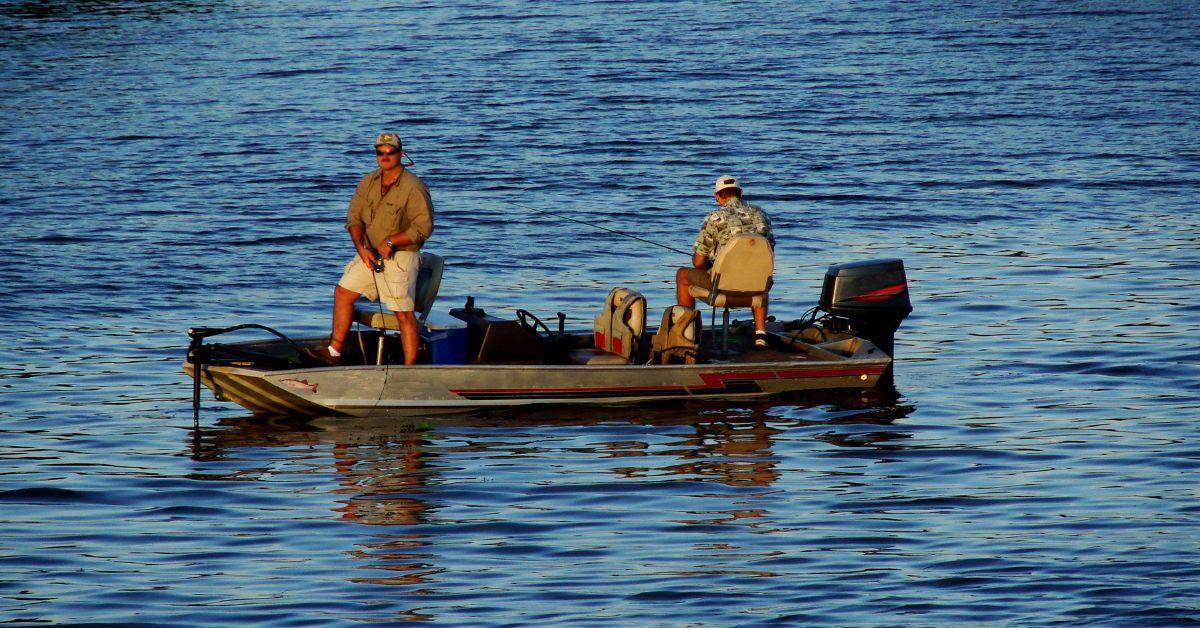
Jon Boat
The Jon boats are favored for accessing shallow water spots that other boats just can't reach. With a flat bottom design, they offer an impressive balance between stability and the ability to navigate shallow areas—where fish might hide, leaving no cove, river, or creek unexplored.
Whether you're casting a line or simply relishing the serenity of nature, these boats are the quintessential companion for shallow-water boating.
Motor Specs
When considering the motor for your Jon boat, engine size matters for both performance and weight. Smaller, lightweight options might include a 6hp or 8hp outboard motor, while those looking for more speed might opt for an engine up to around 25hp.
Keep in mind:
- Larger engines increase your speed but add weight and draft.
- Smaller engines offer better access to shallow sports but might limit your range.
Carrying Capacity
One of the practical appeals of a Jon boat is its carrying capacity, which often accommodates both a few passengers and all your gear. Specific capacity will depend on the model and size of the boat, such as:
- Smaller models (10-foot) carry approximately two to three people or about 450 lbs.
- Larger models (16-foot) can handle four to six people or upwards of 1000 lbs.
Draft Depth
The shallow draft of Jon's boats allows them to effortlessly float in mere inches of water. A static draft, that is, the depth of the boat while at rest, typically ranges from:
- 2 inches for smaller, lighter models empty of gear and passengers.
- 6 to 8 inches for larger models with gear and passengers loaded.
Kill Switch Lanyards
For safety on the water, particularly in shallow areas where running aground can be a hazard, kill switch lanyards are imperative. They:
- Automatically shut off the engine should you fall overboard.
- Prevent the boat from continuing unmanned, possibly causing danger.
Tunnel-Hull Design
Some modern powerboats are equipped with a tunnel-hull design, which facilitates their use in super shallow water by:
- Allowing the motor to sit higher, reducing the boat's draft even under power.
- Enhancing the ability to navigate through a shallow area with a depth of six inches or less without damaging the lower units of the engine.
4. Scooters
When seeking the best boat for shallow water, scooters stand out as a popular option. These shallow-water vessels are known for their impressive maneuverability and ability to cruise through waters as shallow as a few inches, providing an exciting boating experience that is both personal and engaging.
Motor Specs
The motor's power typically ranges from 25 to 40 horsepower, offering a balance between speed and efficient fuel consumption. You can discover scooters that come with modern outboard engines designed to optimize your best ride in shallow waters.
Carrying Capacity
Scooters are generally built to carry one to two passengers, keeping the total weight low for better shallow water performance. Their carrying capacity is ideal for individual adventures or cruising with a buddy.
Draft Depth
A scooter's draft depth is a critical feature; many models can float in just six inches of water, allowing you to skim over sandbars and other shallows without the worry of running aground.
Kill Switch Lanyards
For safety, scooters come equipped with kill switch lanyards. This feature is crucial, as it immediately stops the engine if you fall off, preventing potential injuries and keeping you safe during your shallow water boating.
Tunnel-Hull Design
The tunnel-hull design of scooters contributes to their shallow running draft and is essential for maintaining stability in choppy conditions. These boats can cut through small waves effectively and plane at higher speeds while keeping a shallow draft.
5. Catamarans
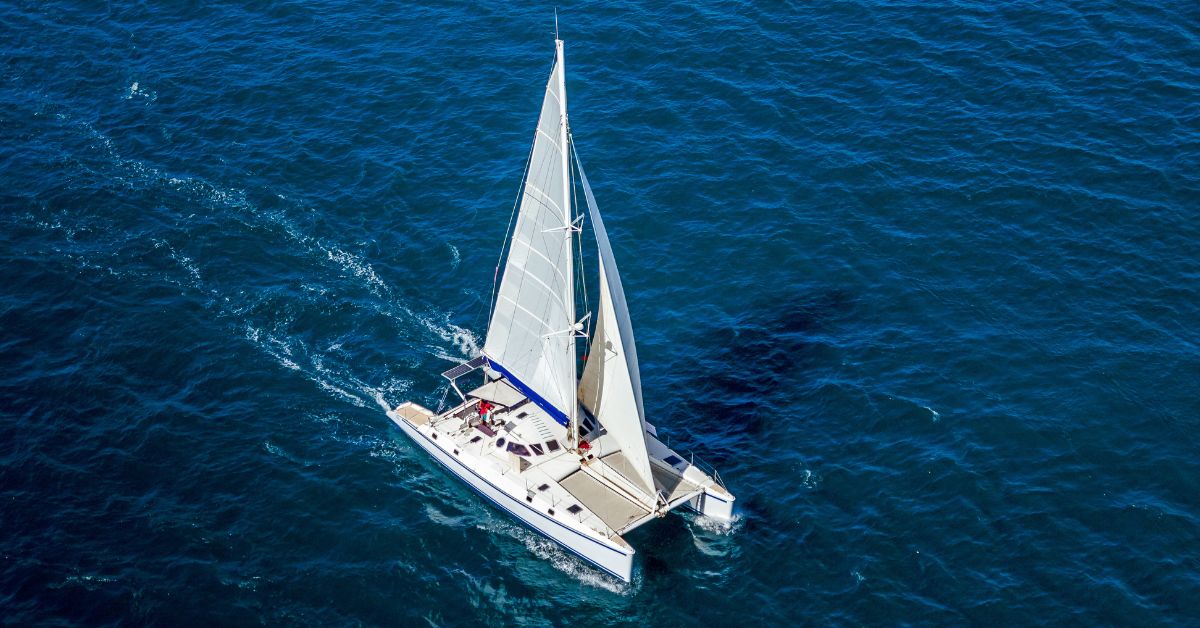
Catamaran
When exploring shallow waters, catamarans are a popular choice due to their unique design that offers stability and a shallow draft. Their double-hulled structure sets them apart from typical monohull boats, making them suitable for shallow water boating without easily running aground.
Motor Specs
Catamarans provide ample power and efficiency thanks to carefully chosen motors that are designed to operate in shallow drafts. These engines are typically high-torque models that can navigate through shallow areas while maintaining a steady plane.
- Engine Power Range: 150-350 HP
- Fuel Efficiency: Optimized for long-distance cruising
Carrying Capacity
The dual hulls of catamarans contribute to a higher carrying capacity, allowing you to bring more gear and passengers. This is especially beneficial for fishing trips where extra equipment is needed.
- Maximum Load: Varies by size, often upwards of a few thousand pounds
- Layouts: Designed with ample storage and deck space
Draft Depth
Catamarans excel in shallow water thanks to their minimal draft depth. This measurement indicates how deep the boat sits in the water, and catamarans are known for having an extremely shallow draft, often only requiring a few inches to float.
- Typical Running Draft: 10-18 inches
- Advantage: Prevents the boat from running aground in shallow waters
Kill Switch Lanyards
Safety in boating is crucial, and kill switch lanyards are a standard feature on catamarans. This safety device stops the engine immediately if the driver becomes dislodged from the helm.
- Importance: Prevents the boat from continuing to run without an operator
- Compliance: Meets boating safety regulations
Tunnel-Hull Design
The signature tunnel-hull design of a catamaran allows air to pass between the two hulls, providing a cushion that elevates the boat for a smoother ride over shallow water and waves.
- Benefit: Reduces drag and improves efficiency
- Effect: Enhances the boat's ability to skim over shallow depths
6. Tunnel Boats
When it comes to navigating the shallows, tunnel boats stand out with their specialized hull design that allows for operation in waters where traditional boats would run aground. This section will elucidate the specifics, from motor specifications to the unique tunnel-hull design, ensuring you understand what makes these boats ideal for shallow water.
Motor Specs
The engine is the heart of any tunnel boat, with horsepower (HP) usually ranging between 60 to 150 HP, depending on the size and purpose. The motor provides the necessary power to traverse shallow waters without the risk of getting stuck.
- Horsepower: 60-150 HP
- Fuel Capacity: Varies, often 20-40 gallons
Carrying Capacity
Load capacity is a crucial aspect of tunnel boats, influencing stability and draft. These vessels can typically carry several passengers and gear, yet it's essential to adhere to the manufacturer's specified limits to ensure safe boating.
- Passenger Capacity: Varies with size, commonly up to 6 persons
- Weight Capacity: Typically ranges from 1,000 to 3,000 lbs
Draft Depth
A tunnel boat's draft is a measure of how deep the boat sits in the water. The shallow draft is a hallmark of these boats, with many models capable of floating in as little as six inches of water.
- Running Draft: 6-12 inches
- Ankle Deep Water: Capability for very shallow water operation
Kill Switch Lanyards
Safety in shallow water boating cannot be overstated, and kill switch lanyards are a vital feature. They ensure the engine shuts off if the driver is displaced from the helm, helping prevent accidents.
- Safety: Mandatory for solo operation
- Tip: Always wear your kill switch lanyard while operating the boat
Tunnel-Hull Design
The tunnel-hull design is key to a tunnel boat's shallow water prowess, with a flat-bottomed hull above a recessed tunnel in the center. This design creates an air pocket, allowing the boat to "ride" on the surface with minimal draft.
- Hull Type: Flat-bottomed with a central tunnel
- Shallow Draft: Enhanced by tunnel-hull design
Tips for Boating on Shallow Water
Boating in shallow waters can be both rewarding and challenging. Here are some essential tips to ensure a safe and enjoyable experience:
1. Know Your Environment
- Chart Your Course: Before setting out, study nautical charts and maps of the area. Be aware of the water depths, tides, and potential hazards.
- Tide and Current Awareness: Understand the tide cycles and current patterns, as they significantly affect water levels and navigation in shallow areas.
2. Choose the Right Boat
- Appropriate Draft: Select a boat with a shallow draft suitable for the water depth you'll be navigating.
- Hull Design Consideration: Boats with flat bottoms or special hull designs, like tunnel boats, are typically better for shallow water.
3. Equipment and Preparation
- Shallow Water Anchors: Equip your boat with specialized anchors for shallow water to hold your position effectively.
- Protective Gear: Use skeg guards or propeller guards to protect your boat’s underside from unseen underwater obstacles.
4. Navigation and Steering
- Go Slow: In unknown or very shallow areas, reduce speed to minimize the risk of grounding or hitting submerged objects.
- Use of Polarized Sunglasses: These can help you see below the water surface, making it easier to spot and avoid obstacles.
5. Respect the Ecosystem
- Avoid Disturbing Wildlife: Be mindful of the local wildlife and habitats. Avoid areas that are breeding grounds or have high ecological sensitivity.
- Minimize Wake: Keep your wake low to prevent erosion and protect the shoreline.
6. Safety First
- Always Wear a Life Jacket: Regardless of water depth, wearing a life jacket is essential for safety.
- Emergency Plan: Always inform someone about your boating plan and estimated return time. Carry communication devices for emergencies.
7. Regular Boat Maintenance
- Inspect and Clean: Regularly check your boat for any damages, especially after navigating in shallow waters. Clean the hull to prevent the spread of invasive species.



